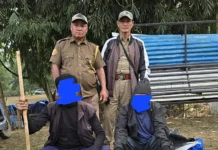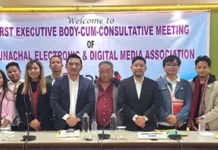[ Ripi Bagra ]
As India’s general elections have reached the last phase, the political atmosphere is charged with intense campaigning and strategic manoeuvring. The ruling Bharatiya Janata Party (BJP), led by Prime Minister Narendra Modi, and the principal opposition party, the Indian National Congress (INC), spearheaded by Rahul Gandhi, are at the forefront.
Regional parties like the Trinamool Congress (TMC), Dravida Munnetra Kazhagam (DMK), and the Aam Aadmi Party (AAP) are also significant players, each wielding substantial influence in their respective states. Campaigns are marked by inflammatory speeches, social media propaganda, and strategic alliances aimed at consolidating specific voter bases.
Religious polarisation
One of the most significant and troubling aspects of electoral division in India is religious polarisation. Political parties, particularly the BJP, have been accused of leveraging Hindu nationalism to consolidate the Hindu vote bank. This strategy often involves invoking fears of the ‘other’, particularly the Muslim community, to fuel Hindu voters.
Incidents such as the Ayodhya dispute, the Gujarat riots, and more recently, the Citizenship Amendment Act (CAA) and the National Register of Citizens (NRC) have intensified religious tensions. The rhetoric used during election campaigns frequently stokes communal sentiments, leading to a polarised electorate. This religious divide is not only a threat to social harmony but also undermines the secular fabric of the Indian Constitution.
Caste-based fragmentation
Caste continues to play a crucial role in Indian politics. Political parties often resort to caste-based vote banks, appealing to specific castes for support. The rise of regional parties like the Bahujan Samaj Party (BSP) in Uttar Pradesh, which primarily represents the Dalits, and the Rashtriya Janata Dal (RJD) in Bihar, which is supported by the Yadavs and Muslims, illustrates the deep entrenchment of caste in the political landscape. Such caste-based politics reinforces social stratification and perpetuates inequalities. While affirmative action and reservations aim to redress historical injustices, their politicisation during elections often leads to caste-based mobilisation rather than addressing broader socioeconomic issues.
Regional disparities
India’s federal structure comprises states with distinct identities, cultures, and languages. Regional parties have gained prominence by focusing on local issues and identities, often at the expense of national unity. States like Tamil Nadu, West Bengal, and Maharashtra see strong regional parties like the Dravida Munnetra Kazhagam (DMK), All India Trinamool Congress (TMC), and Shiv Sena (UBT), respectively. These parties prioritise regional interests, sometimes clashing with central policies and leading to tensions between the state and central governments.
Economic inequality
Economic disparities in India are stark, and elections often reflect these divides. Political discourse is heavily influenced by the promise of economic development and welfare schemes. However, the implementation of these schemes frequently becomes a tool for electoral gain rather than genuine socioeconomic progress.
Populist measures like loan waivers, subsidies, and direct cash transfers are announced to secure votes, but their long-term impact on economic stability and inequality is questionable. Furthermore, economic policies favouring certain regions or communities can lead to resentment and a sense of injustice among those left behind, deepening the economic divide.
Ideological conflicts
The ideological landscape in India has become increasingly polarised. The rise of the BJP, with its Hindutva ideology, contrasts sharply with the Congress party’s centrist, secular stance and the left-wing ideologies of parties like the Communist Party of India (Marxist).
This ideological battle often translates into highly charged election campaigns where political discourse deteriorates into mudslinging and personal attacks.
Social media has amplified these divisions, with fake news and propaganda spreading rapidly, influencing public opinion and voter behaviour. The ideological polarisation is not merely confined to political parties but permeates society, affecting friendships, families, and communities.
Media and electoral strategies
The role of media, both traditional and social, in shaping electoral outcomes cannot be understated. Media houses often have political affiliations, leading to biased reporting and the propagation of partisan views. Social media platforms, with their algorithm-driven content dissemination, create echo chambers where individuals are exposed primarily to information that reinforces their pre-existing beliefs.
This fragmentation of information sources worsens divisions, as voters are less likely to encounter balanced perspectives. Additionally, the use of data analytics and targeted advertising in election campaigns, while technologically advanced, raises ethical concerns about voter manipulation and the erosion of informed, rational decision-making.
Implications for democracy and unity
The divisive nature of Indian elections poses serious challenges to the health of its democracy. The focus on identity politics – whether based on religion, caste, or region – detracts from substantive policy debates on issues like economic development, healthcare, education, and infrastructure. The erosion of a common national narrative and the increasing emphasis on parochial interests undermine the spirit of collective progress and national unity.
Moreover, the polarising tactics employed during elections can have long-lasting social repercussions. Communal riots, caste conflicts, and regional agitations are often byproducts of such divisive politics, leading to a fractured society. This atmosphere of division can hinder governance, as governments may struggle to implement policies effectively in a polarised environment.
Conclusion
India’s elections, while a testament to its democratic vibrancy, are increasingly becoming a source of division within the nation. Religious, caste-based, regional, economic, and ideological fractures are being accentuated by the electoral strategies of political parties and the role of media.
Addressing these divisions requires a concerted effort to promote inclusive politics, foster dialogue and understanding among diverse groups, and prioritise governance over electoral gain. It is only by bridging these divides can India can ensure the integrity of its democracy and the unity of its nation. (The analysis presented is based on the contributor’s interpretation of recent electoral trends and their impact on India’s socio-political landscape. She can be reached at ripibagra@outlook.com or @RipiBagra on X)




